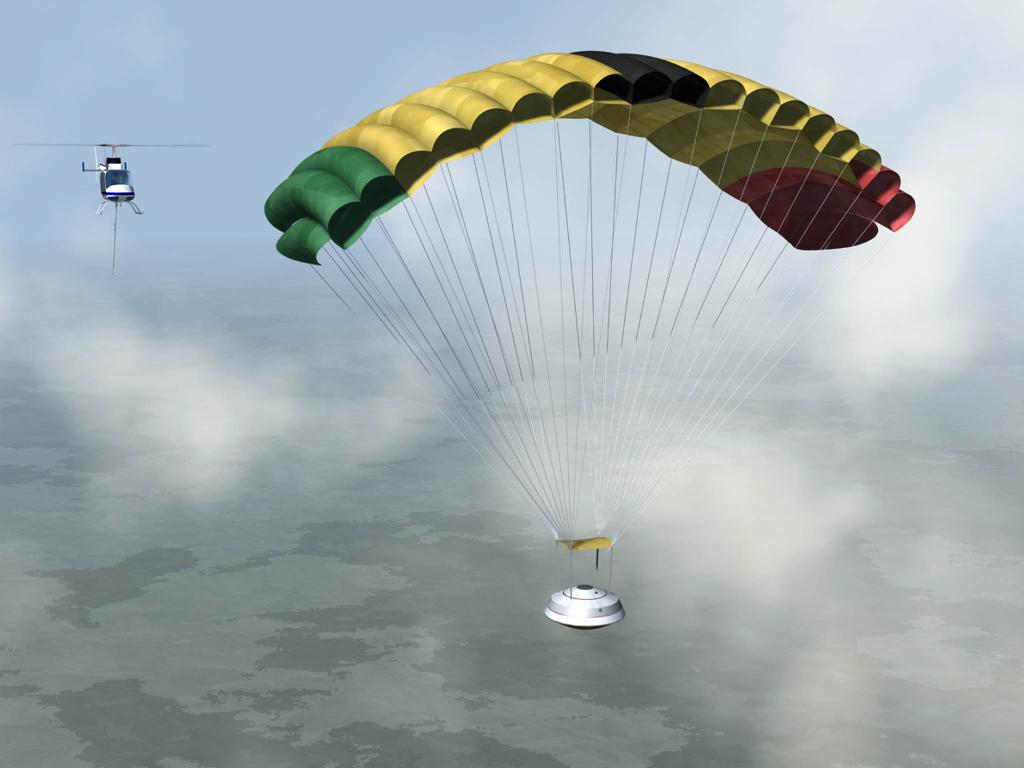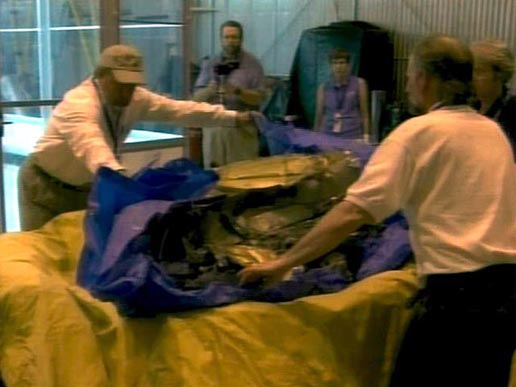 Copyright © Michael Richmond.
This work is licensed under a Creative Commons License.
Copyright © Michael Richmond.
This work is licensed under a Creative Commons License.
Impulse on the Genesis spacecraft
The Genesis Spacecraft
spent several years in space before returning to the Earth.

After it reached the lower portions of the atmosphere,
where the air is thick, it was supposed to
deploy a parachute and float gently downwards:

Unfornately, the chute failed to open,
and so the spacecraft fell rapidly through the air ....

.... and decelerated VERY sharply when it struck the ground.

The spacecraft, which has
a mass 206 kg,
was travelling at about 89 m/s
when it struck the ground.
- What was the spacecraft's initial momentum just before it hit the ground?
- What was the spacecraft's final momentum after it hit the ground?
- What was the impulse given to the spacecraft
by the ground?
- Now, let's just GUESS that the impact lasted for a time
about t = 0.1 s.
What would the average force on the spacecraft be during that time?
- Based on this average force, what would be the
average acceleration of the spacecraft?
- Using this average acceleration, how far would the spacecraft
move into the ground (ouch) during the impact?
- Look at the picture below to get an idea for the size
of the spacecraft. Estimate the diameter of the
entire probe. Roughly half of the probe
was buried underground in the crash.
Is this consistent with your calculations above
of the distance travelled during the acceleration?
- If the two distances are not consistent, explain
what is going on.
Here's a picture of the wreckage which gives you
an idea of its size.

 Copyright © Michael Richmond.
This work is licensed under a Creative Commons License.
Copyright © Michael Richmond.
This work is licensed under a Creative Commons License.

 Copyright © Michael Richmond.
This work is licensed under a Creative Commons License.
Copyright © Michael Richmond.
This work is licensed under a Creative Commons License.





 Copyright © Michael Richmond.
This work is licensed under a Creative Commons License.
Copyright © Michael Richmond.
This work is licensed under a Creative Commons License.